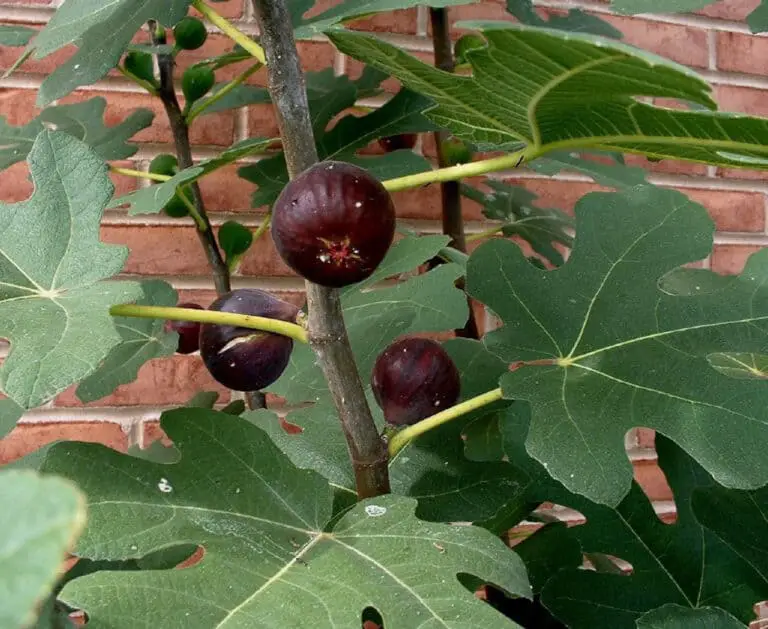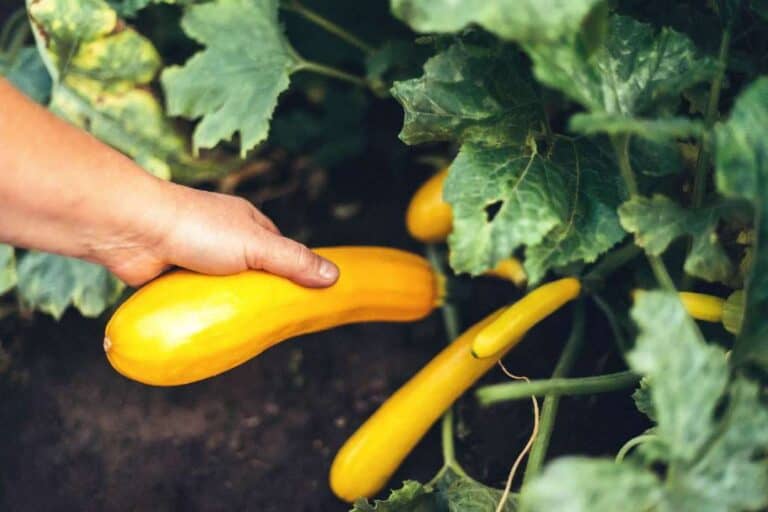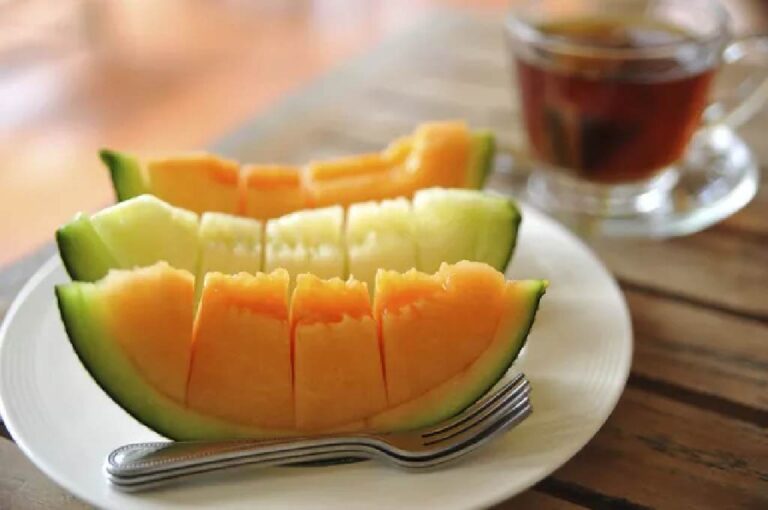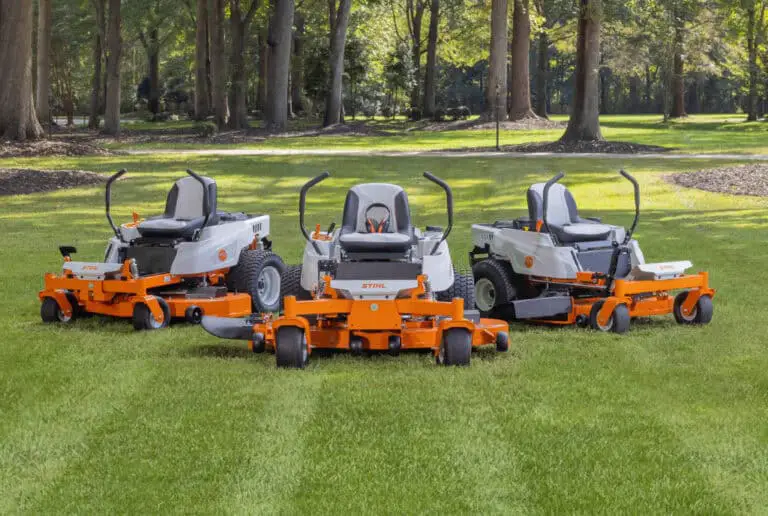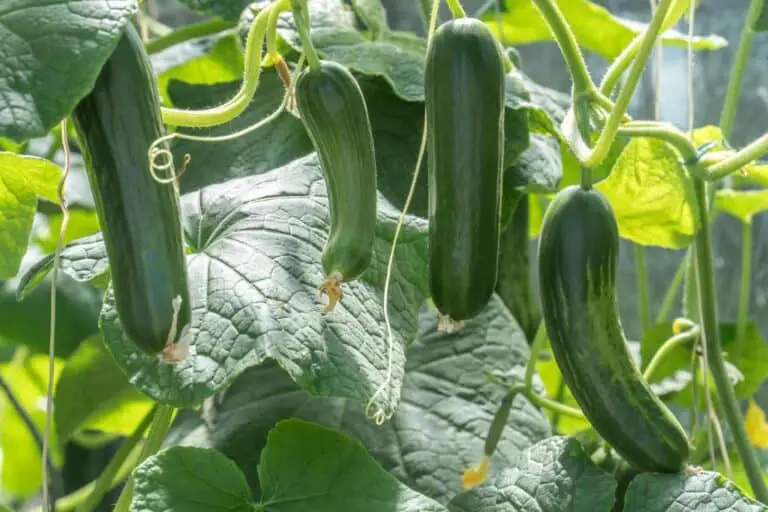Bell Peppers Growing Stages (with Pictures): Plant Life Cycle & Timeline
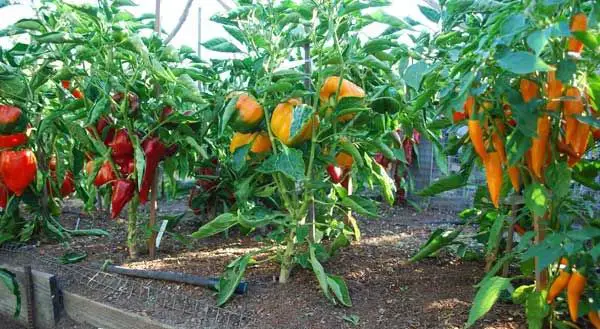
Bell peppers are a popular vegetable crop in the United States. They are available year-round, but peak production occurs in late summer and early fall.
They come in different colors, sizes, and shapes. There are many different types of bell peppers. The most common bell pepper is green, but it can also be red, yellow, or orange. Bell peppers are a good source of vitamin C and other nutrients.
Bell peppers grow naturally into a bush-like plant with one main stem. Most bell peppers are grown in fields as annuals.
Bell peppers grow from seeds to mature plants. They have five growth stages: germination, vegetative growth, flowering and pollination, fruiting, and plant death.
Today, I invite you to join me on a visual expedition through the stages of bell pepper growth. Nature orchestrates a symphony of transformation. From tiny seeds to vibrant harvests, this journey unveils the secrets of the plant life cycle. It also reveals the timeline that shapes these bell pepper wonders.In this article, we will explore each stage of the life cycle of bell pepper plant growth. We also talk about the planting aspect of this variety.
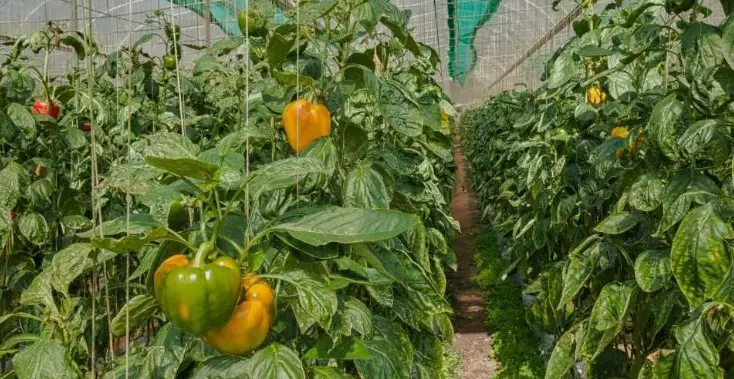
Bell Pepper Plant Life Cycle
Like many other plants, bell peppers are a type of vegetable that grows on a vine. The bell pepper plant starts out as a seed in the ground. Once the bell pepper plant grows, it will need water and sunlight. The bell pepper plant will produce flowers, which will create fruit on the plant. The bell pepper plant will eventually die and be removed from the garden.
Below are details of the bell pepper plant’s growth stages and life cycle:
1. Germination
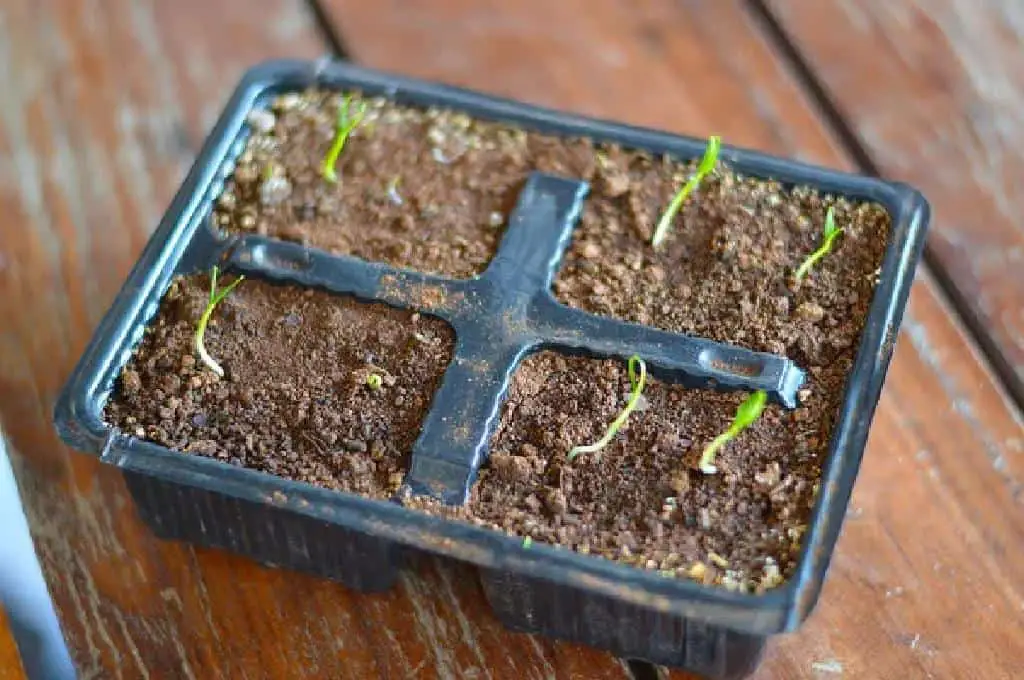
Bell peppers are tropical plants that love the heat. Seeds will germinate with soil temperatures above 60 degrees but do best with warm soil temperatures between 70 and 95 degrees.
Bell pepper seeds germinate slowly, around 7–10 days, but can take up to 4 weeks. Bell peppers, like other seeds, will germinate faster in warmer soil. They will germinate slower in colder temperatures.
2. Vegetative Growth
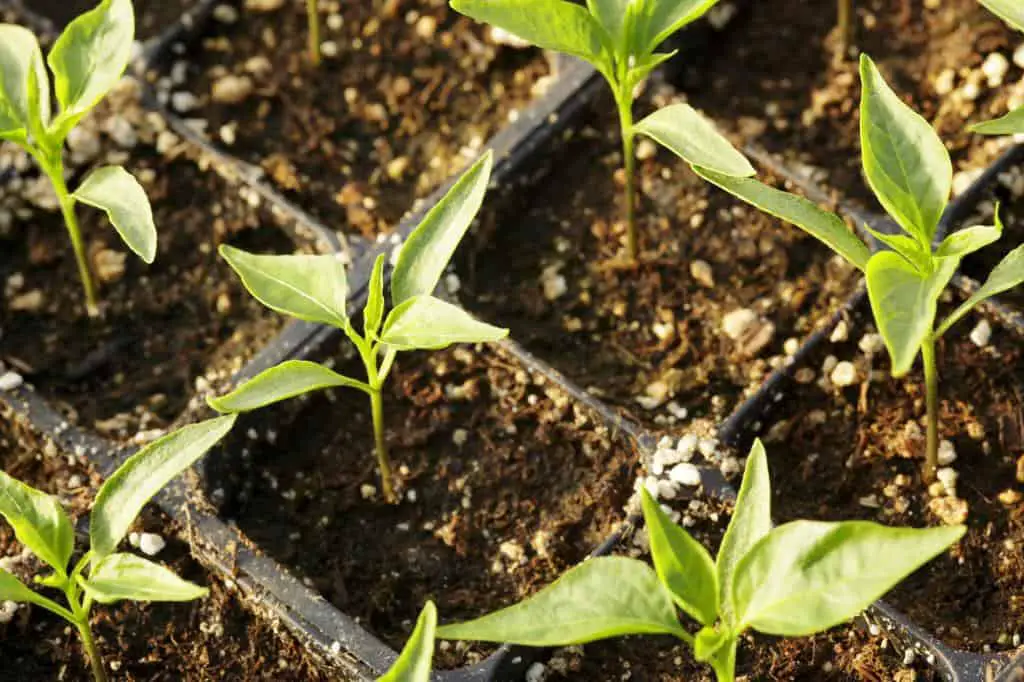
Because they are a warm-weather plant, starting bell peppers as easy indoor plants is a good idea to get a head start on the season. Try to use compostable starter pots that can be planted directly into the ground to avoid shock during transplanting.
Keep the bell peppers indoors until nighttime temperatures remain above 55 degrees. If your pepper plant starts to produce flowers soon after transplanting, pick the flowers off the plant.
The bell pepper plant will yield more at the end of the season if it has more vegetative growth during this period. After four weeks of being transplanted, the plant will start flowering. Let the flowers be.
3. Flowering and Pollination
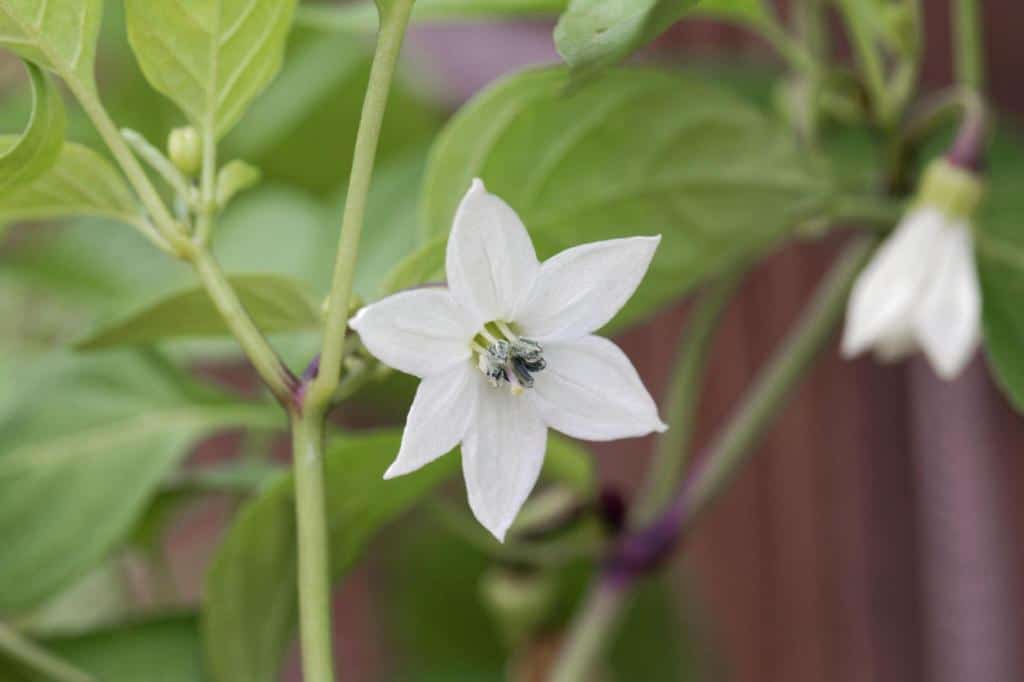
Bell pepper plants are known as self-pollinating plants. They have “bisexual” or “perfect” flowers that have both male and female bell pepper parts in the same flower.
Even though they are self-pollinating, they still cross-pollinate as well. The wind, or insects traveling from flower to flower, will carry pollen from one plant to another.
If you’re growing hot and sweet peppers, then they can cross-pollinate. Cross-pollination between peppers will not affect the current year’s produce, so it will not make your sweet peppers hot or vice versa.
The seeds of the cross-pollinated pepper will have a blend of genetics from the two species of peppers. If you want the seeds from your bell peppers for next year, then you may consider preventing cross-pollination.
The best way to do it is by putting bags over the blooms of the earlier arriving species. Or, plant different varieties 300 or so yards away with physical barriers in between the two.
If you’re growing peppers where they are shielded from the wind, the plants may need some help to pollinate successfully. Shake the branches of the pepper plants regularly while they are flowering. This should do the trick. To do a thorough job, use a paintbrush to swirl around each flower.
4. Fruiting
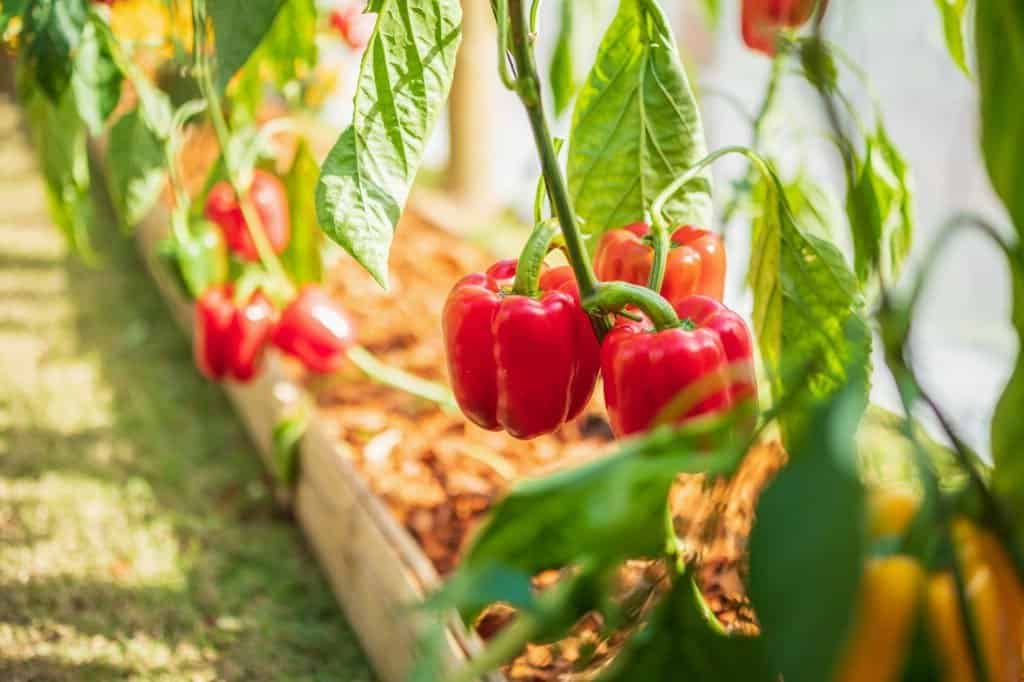
Fruits start off small and green in most varieties. As fruits continue to mature, they get bigger, and in most varieties, they will turn yellow, orange, or red. As they turn, varieties can be two-toned or partially mixed hues.
The pepper will continue to ripen, and if unpicked, the stem will weaken and the fruit will fall to the ground. Eventually, the fruit will rot, and the pepper seeds inside will find their way into the soil to become new pepper plants.
5. Plant Death
A pepper plant can live 2–5+ years if overwintered indoors and kept from the frost, but sooner or later the party must end. In most US climates, if not overwintered, this warm-weather plant will die with the first frost. The root system will also be killed by the first hard frost.
Where do Bell Peppers grow?
China is the #1 producer of green bell peppers, followed by Mexico, Turkey, Indonesia, and the United States. In the US, the top producers of bell peppers are California, Florida, Georgia, New Jersey, Ohio, North Carolina, and Michigan.
Bell peppers are available year-round from greenhouse production. However, supply increases in the summer, making the peppers cheaper during that time.
California’s bell pepper production runs from April to December, with peak volume from May to July. Florida’s bell pepper production goes from October through July, with peak volume between March and April.
Bell Peppers Grown in Greenhouses
A gardener can keep a bell pepper plant alive for 5+ years, and it can form into a strong woody plant. Grown in greenhouses, bell pepper plants are run up on twine supports and look like vining plants.
Peppers grown in greenhouses account for about 25% of pepper production in the US. The number of greenhouse-grown peppers is increasing every year, according to A.C. Nielsen data.
Bell peppers grown in greenhouses are pruned regularly, about every two weeks. This promotes balanced growth, avoids disease, and ensures maximum yields. They are topped once and have two main branches per plant, known as the “V” system, and those branches are trained up to lengths of twine.
Most bell peppers are started indoors and then transplanted as seedlings into the field. Typically, fields are lined with rows of black plastic that raise soil temperatures and prevent weeds from growing nearby. Pruning and staking increase labor costs and are not always done. The same is true with drip irrigation lines. Different farmers employ different methods.
For four to six weeks, bell pepper fields are hand-harvested once a week. Then they are packed in bins and shipped to a cool storage area before being graded and distributed. Peppers are graded by size, color, and visible defects.
Do Bell Peppers Grow on Vines or Trees?
Bell peppers grow naturally as bush-like plants. In greenhouses employing the “V” system, they definitely look like vine plants and are regularly trained up to over 10 feet tall. This is the result of regular pruning to keep an orderly and productive greenhouse and is not the way a pepper plant normally grows.
Bell peppers do not grow on trees but are perennial plants that, if grown in areas without frost or brought indoors to overwinter, can live for 5+ years. At that time, they can certainly become what looks like a small tree.
Constant pruning maintains a certain height and width. This redirects growth back into the branches and stems. They continue to grow and thicken into a stout plant with more woody branches than herbaceous.
How Deep Do Bell Pepper Roots Grow?
Bell pepper roots are shallow to medium-depth, growing about 8–18 inches deep and about as wide. Bell peppers started indoors in pots will have about 4-inch-deep roots when transplanted. They usually grow deeper than bell peppers started from seed.
Water bell peppers with 1 inch of water a week during vegetative growth. Once flowering starts, through the time bell peppers start to reach their full size, water with 2″ of water a week.
Once fruits reach near their full size, back off the water to 1″ a week again. You want to include rainfall in these measurements. Use a rain gauge to get an accurate idea of rainfall, and if you use a sprinkler, figure out how much water fills the gauge in 15 or 30 minutes.
How Tall Do Bell Pepper Plants Grow?
Bell pepper plants belong to the species Capsicum Annuum but are actually perennials that when kept safe from frost by overwintering indoors will grow peppers for anywhere from 2-5+ years.
Most people grow bell peppers as annuals by planting them every year. Bell peppers that have grown for multiple years will be bigger than pepper plants that are grown for a single year. Bell pepper plants grown as annuals can have a large difference in size depending on whether the plant was started indoors.
Bell peppers grown in one season will reach between 18-36 inches tall and 12-24 inches wide. Most bell pepper varieties overwintered with supplemental lighting can reach 4-6 feet tall and 4-6 feet wide by the next growing season. Greenhouses employ a “V” system where bell peppers are trained up two lengths of twine and regularly reach thirteen feet tall.
Here you can see the height that the greenhouse workers have set these bell peppers up to reach. This looks like more twines per plant than the “V” system. In the “V” system, plants are topped to get two main stems and regular pruning keeps all growth going to those two main stems that are run up two pieces of twine per plant.
When overwintering bell pepper plants indoors without supplemental lighting, the plant should enter a dormant state. In this state, the bell pepper plant will not continue to grow or produce fruit. It will simply survive.
When the next season approaches, break the bell pepper plants out of dormancy by watering, fertilizing, and exposing them to more light. If you see new growth in a month or so, you’ve successfully overwintered your bell pepper plant. The pepper plants’ second season should see them double in size from the first year and be 2-3x more productive.
Final Thought
In conclusion, bell peppers are versatile vegetables that can be grown all year round in many climates. Bell peppers grow best in the summer because they can soak up the sun and enjoy the dry weather.
They grow through several stages, and their life cycle is completed when they are harvested. By understanding the growth stages and life cycle of bell peppers, gardeners can better care for their plants and ensure a successful harvest.
FAQs
How long does it take for bell peppers to go from seed to harvest?
The timeline for bell peppers from seed to harvest typically spans 70 to 85 days. Factors like climate, care, and pepper variety can influence the exact duration.
Can bell peppers be grown indoors, and does it affect their growth stages?
Yes, bell peppers can be grown indoors. The stages remain the same. However, indoor cultivation may require extra care, like enough lighting and temperature control.
What are the signs that bell peppers are ready for harvest?
Bell peppers are ready for harvest when they reach their full color and size. Firmness and a glossy sheen are also indicators of optimal ripeness.
How do you encourage blossom growth during the bell pepper plant’s life cycle?
Gently shaking the plants to aid pollination and avoiding over-fertilization are effective ways to encourage blossom growth in bell pepper plants.
Is it possible to grow bell peppers from store-bought seeds, and do they follow the same growth stages?
Yes, you can grow bell peppers from store-bought seeds. The growth stages remain consistent, but the quality of seeds and care influence overall success.
Should I prune my bell pepper plants during their growth stages?
Pruning can promote air circulation and manage plant size. Trim selectively to encourage fruit production while maintaining a manageable height.
What pests are common during the bell pepper plant life cycle, and how do you manage them?
Aphids and caterpillars can be common. Use natural predators like ladybugs and neem oil to control pests during various growth stages.
Are there specific considerations for container gardening in bell pepper plant stages?
Container gardening requires well-draining soil, proper spacing, and adequate support for the growing plant, ensuring optimal bell pepper development in limited spaces.

